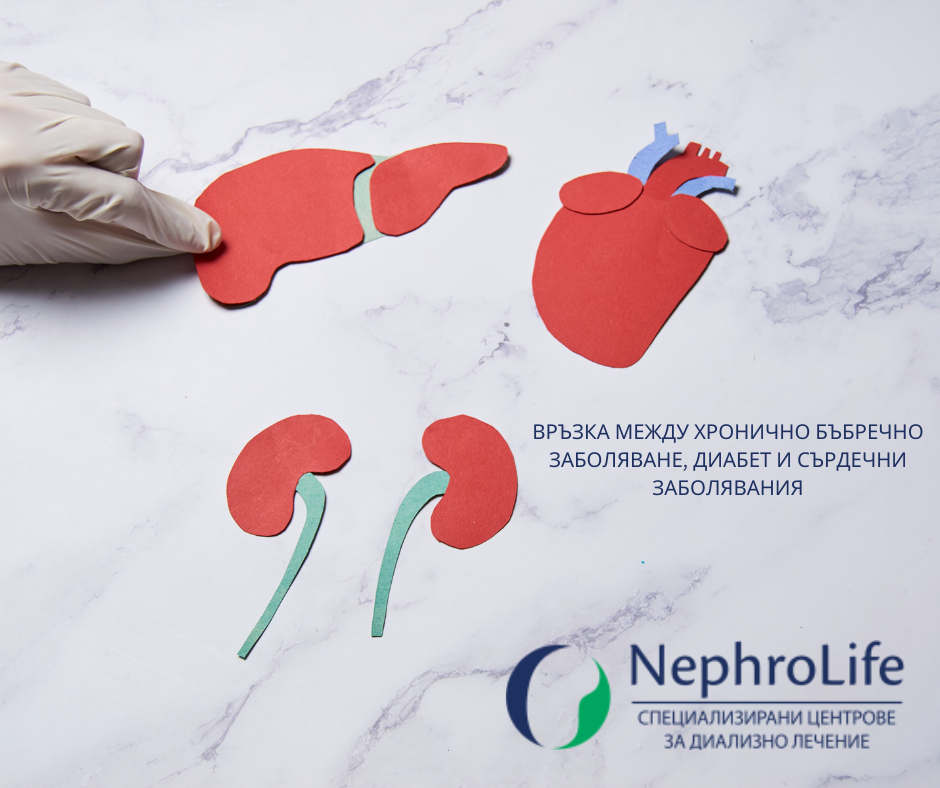Chronic kidney disease (CKD) is a partial or complete reduction of kidney function and it has five stages, where stage 5 is called renal failure. The disease progresses slowly and is determined by the extent to which kidney function is reduced.
In its initial stages, CKD is asymptomatic. Often, patients do not even know they have a kidney problem, but find out during the course of treatment for another disease, or when their condition is already in an advanced stage.
Symptoms of CKD may include: heaviness or pain in the lower back, high blood pressure, swelling, decreased urine output.
Organs and systems in the body are interconnected. Therefore, a problem in one place affects the whole body. Moreover, the risk factors for these 3 diseases are similar: hyperglycemia (high blood sugar), arterial hypertension, being overweight, family history and low physical activity.
DIABETES AND CHRONIC KIDNEY DISEASE
Nowadays, diabetes is quite prevalent. Nearly 1 in 3 diabetes patients suffers from some degree of chronic kidney disease.
High blood sugar damages the blood vessels, leading to arterial hypertension, which in turn damages the kidneys and their function. On the other hand, hyperglycemia itself leads to kidney damage.
Therefore, maintaining normal blood sugar levels is crucial. Here, not only the medications your endocrinologist will prescribe are important, but also a healthy lifestyle: body weight control through appropriate diet and exercise, as well as avoiding nephrotoxic (kidney-damaging) medications and taking them only when absolutely necessary.
HEART DISEASE AND CHRONIC KIDNEY DISEASE
Kidney disease often leads to heart complications, while heart problems lead to kidney dysfunction.
Uncontrolled hypertension (blood pressure above 140/90) is one of the causes of CKD. On the other hand, CKD can lead to arterial hypertension and subsequently heart disease.
Many factors that can cause kidney disease also damage the heart and blood vessels. Among them, firstly, come high blood pressure and diabetes, which many patients with CKD have. In second place come obesity and smoking.
There is a strong connection between chronic kidney disease, heart disease and diabetes and it is not rare for one patient to have all three of them. In their early stages, all of these diseases can be asymptomatic. Therefore, regular check-ups (for example, every year), even if you don’t have any complaints, can significantly increase your quality of life.
CHRONIC KIDNEY FAILURE AND CARDIOVASCULAR DISEASES (nephrolife.bg)










